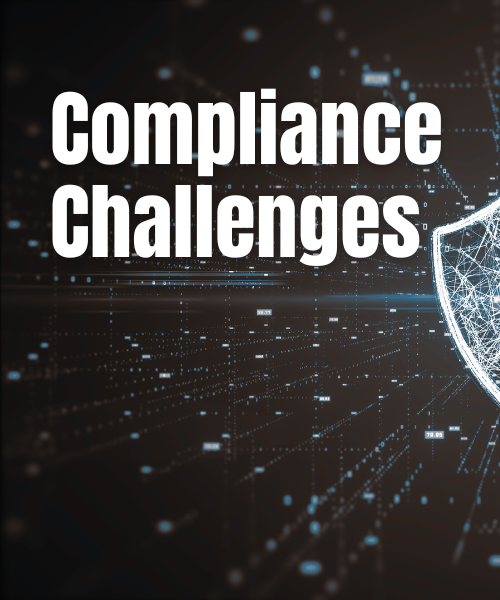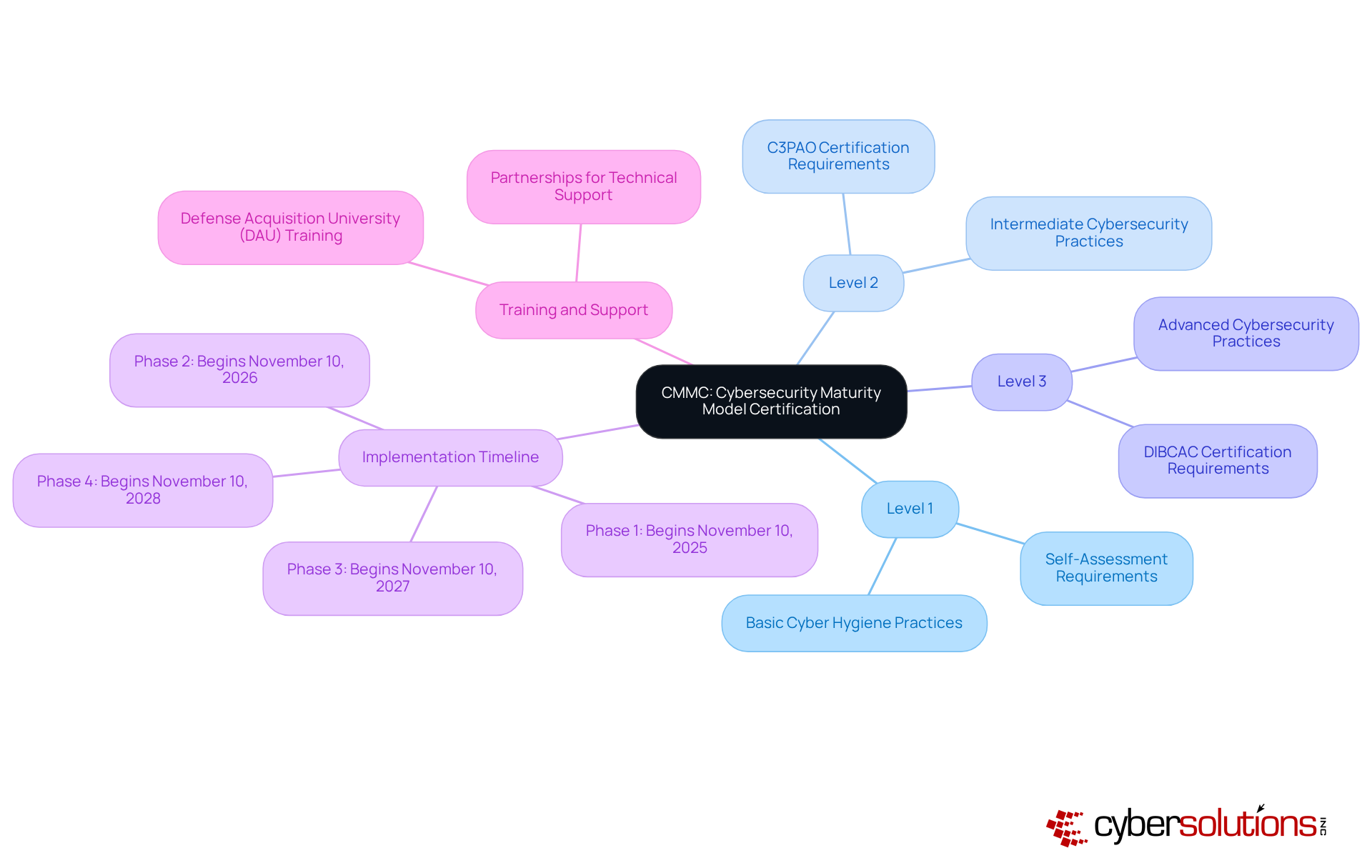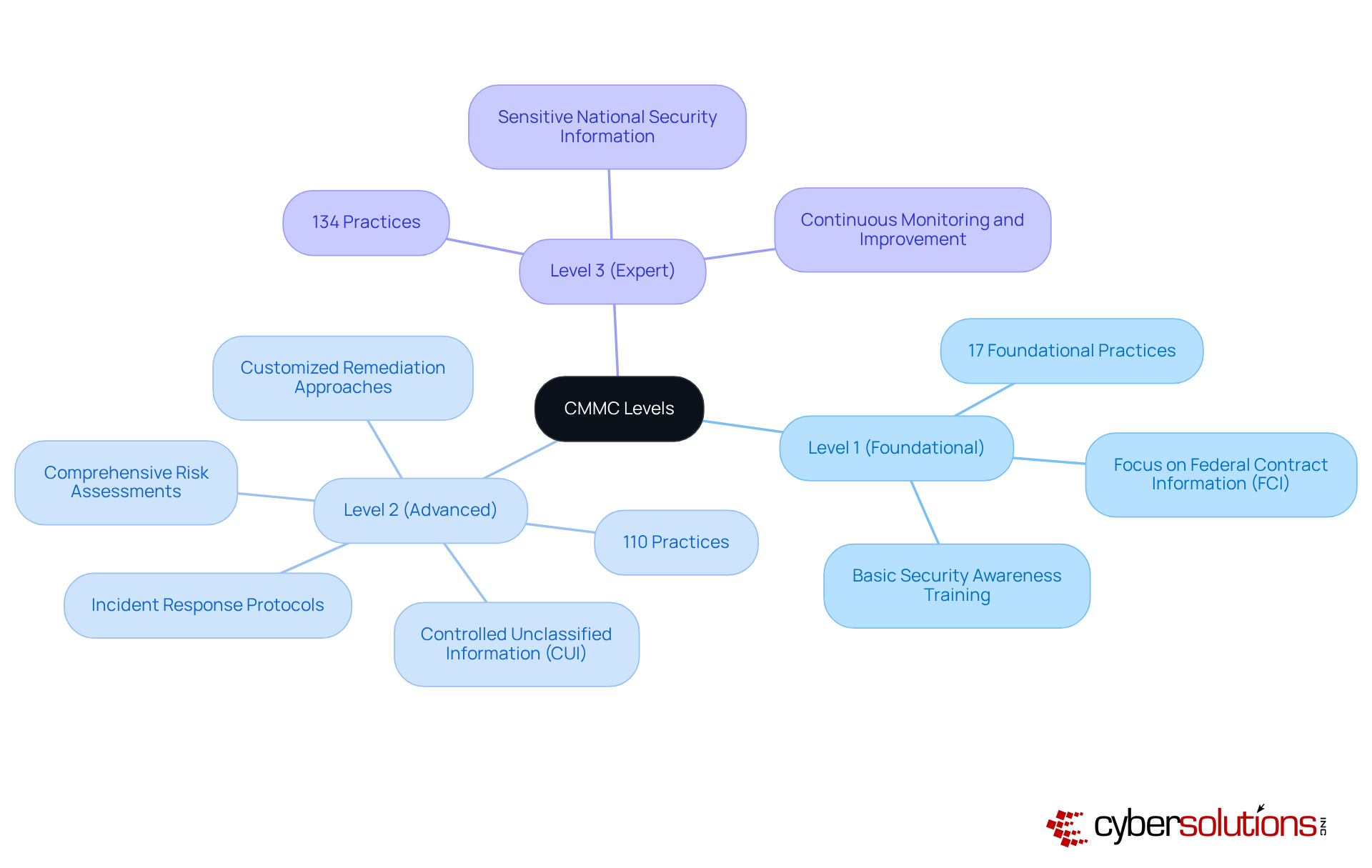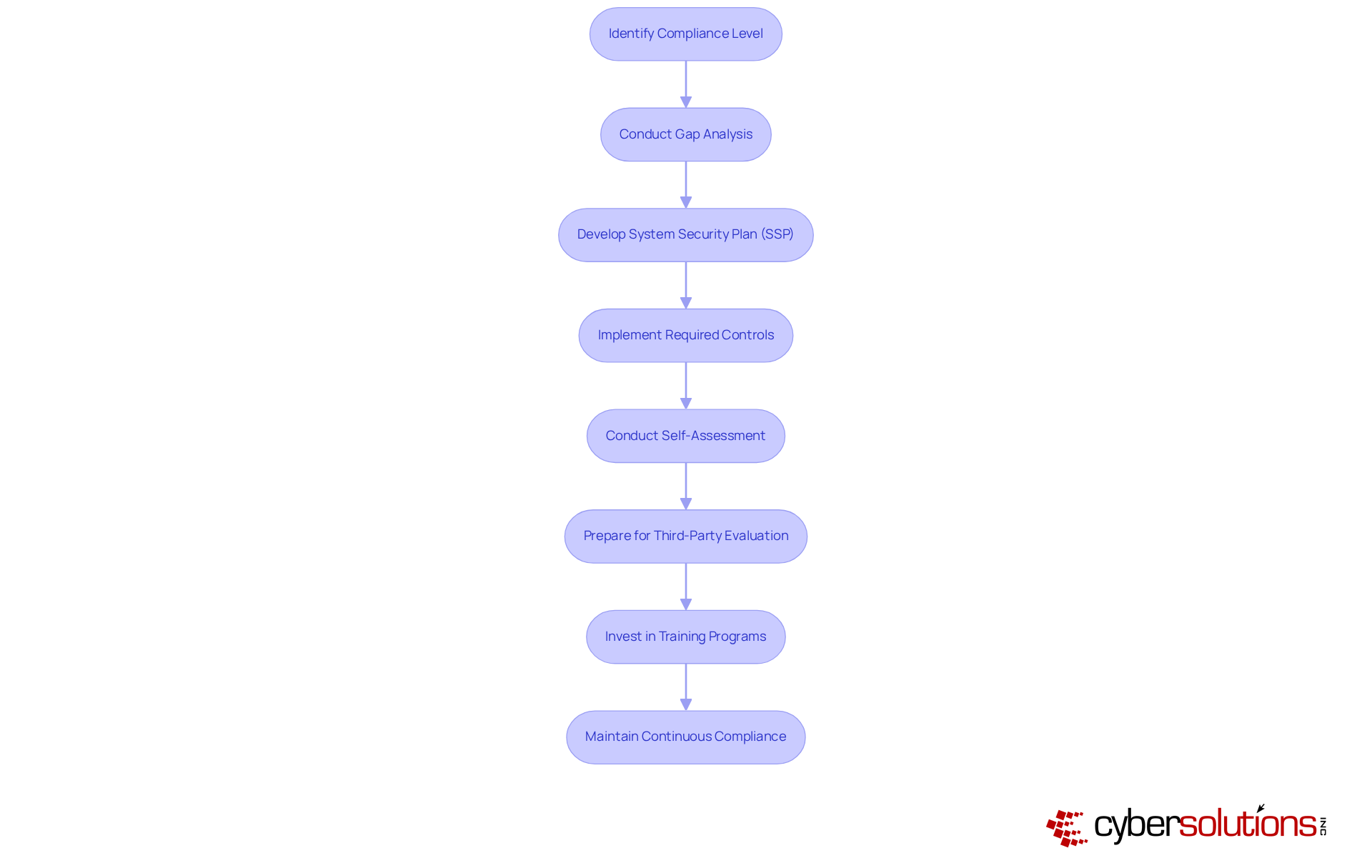
Achieving CMMC cybersecurity compliance is paramount for organizations navigating the complexities of today's digital landscape. This systematic approach involves:
Organizations must prepare diligently and commit to ongoing education to meet the evolving standards set by the Department of Defense, with the mandatory compliance date looming on November 10, 2025. By understanding these essential steps and best practices, organizations can effectively position themselves to not only meet compliance but also enhance their overall cybersecurity posture.
Understanding the intricacies of the Cybersecurity Maturity Model Certification (CMMC) is increasingly vital for organizations within the Defense Industrial Base. As mandatory compliance looms on the horizon, businesses must navigate a complex landscape of security requirements to safeguard sensitive information effectively. This guide provides a comprehensive roadmap to achieving CMMC compliance, detailing essential steps and best practices that not only ensure adherence but also enhance overall cybersecurity posture. As the deadline approaches, organizations must consider:
The Cybersecurity Maturity Model Certification (CMMC) represents a critical framework established by the Department of Defense, aimed at fortifying the cybersecurity posture of entities within the Defense Industrial Base. This initiative is imperative for contractors tasked with safeguarding sensitive information, including Controlled Unclassified Information (CUI) and Federal Contract Information (FCI).
The framework delineates various levels, each accompanied by specific criteria that entities must fulfill to achieve certification. Compliance with this cybersecurity framework is mandatory; it will become obligatory for all contractors seeking DoD contracts starting November 10, 2025.
Understanding the complexities of the CMMC is vital for organizations aiming to navigate the intricate landscape of security requirements and prepare for forthcoming changes. As emphasized by the DoD, adherence to CMMC standards is essential for maintaining eligibility and competitiveness in the evolving defense contracting arena.

CMMC encompasses three distinct levels of compliance, each meticulously designed to meet varying security requirements:
Level 1 (Foundational): This entry-level tier prioritizes essential safeguarding measures for Federal Contract Information (FCI). Organizations must implement 17 foundational practices, including access control and basic security awareness training.
Level 2 (Advanced): Targeted at entities managing Controlled Unclassified Information (CUI), Level 2 mandates the execution of 110 practices in alignment with NIST SP 800-171. Key components include incident response protocols and comprehensive risk assessments, ensuring a more robust security framework. Customized remediation approaches are vital at this level, as companies must address regulatory gaps through policy updates and system enhancements.
Level 3 (Expert): Tailored for entities managing sensitive national security information, Level 3 incorporates 134 practices that substantially elevate security measures. This level requires continuous monitoring and improvement to effectively safeguard critical data.
Understanding these levels is crucial for companies aiming to assess their current security posture and identify necessary actions for CMMC cybersecurity compliance. For instance, case studies illustrate that entities actively engaging in customized remediation strategies and seeking expert guidance during assessments not only meet regulatory requirements but also enhance their overall CMMC cybersecurity posture. Alarmingly, over 16% of Defense Industrial Base contractors reported minimal to no preparedness for certification standards, underscoring the urgency of addressing these compliance requirements. Furthermore, the staged implementation schedule commences on November 10, 2025, highlighting the importance for organizations to seek legal counsel for privileged data protection evaluations and assess subcontractor compliance to mitigate potential legal risks under the False Claims Act for erroneous attestations. Specialized guidance and support during the official assessment are imperative for achieving certification and ensuring ongoing management.

To achieve CMMC compliance, it is imperative to follow these essential steps:
Identify Your Necessary Compliance Level: Evaluate the kind of information your entity manages to ascertain the suitable compliance tier. Comprehending the specific requirements for each level is essential; entities at Level 1 must meet basic security practices, while those at Level 3 need to implement advanced measures.
Conduct a Gap Analysis: Assess your existing cybersecurity practices in relation to the criteria of the selected certification level. This analysis is vital for identifying areas for improvement and prioritizing actions based on their impact and complexity. A thorough gap analysis assists entities in aligning their practices with CMMC cybersecurity maturity model certification standards, ensuring they are well-prepared for certification.
Develop a System Security Plan (SSP): Create a detailed SSP that outlines how your organization will meet the compliance requirements, including specific policies and procedures. This plan should reflect the findings from your gap analysis and serve as a roadmap for compliance.
Implement Required Controls: Based on your gap analysis, implement the necessary security controls and practices to meet the requirements of your designated CMMC level. This may involve enhancing existing measures or adopting new technologies to bolster your CMMC cybersecurity posture. Remember, achieving Level 3 certification involves implementing advanced security measures such as continuous monitoring, vulnerability scanning, and a formal risk management strategy. Cyber Solutions provides Compliance as a Service (CaaS) to streamline this process, offering risk evaluations and continuous regulatory monitoring customized to your requirements.
Conduct a Self-Assessment: Perform a self-assessment to ensure that all controls are in place and functioning effectively. Frequent self-evaluations assist in sustaining momentum and responsibility throughout the adherence process, enabling organizations to recognize and tackle any gaps proactively.
Prepare for Third-Party Evaluation: Collaborate with a Certified Third-Party Assessment Organization (C3PAO) to arrange your official assessment. Early engagement with accredited bodies can provide valuable insights and guidance on the assessment expectations, facilitating a smoother certification process.
Invest in Training Programs: To foster a security-conscious culture, invest in training programs for employees at all levels. Employees must comprehend their responsibilities in protecting sensitive information and following security policies, which is essential for ensuring adherence.
Maintain Continuous Compliance: After achieving certification, establish processes for ongoing monitoring and improvement to maintain compliance with CMMC standards. Ongoing monitoring and routine evaluations are crucial for detecting vulnerabilities and guaranteeing the effectiveness of security measures, which are essential components of CMMC cybersecurity, fostering long-term resilience in your security practices. As Perry Keating highlights, the aim is not merely to pass an evaluation but to foster a culture of ongoing enhancement in digital security. Furthermore, Cyber Solutions offers Incident Response services to assist organizations in swiftly recognizing and addressing threats, ensuring business continuity and adherence to security standards.

Achieving CMMC cybersecurity adherence is crucial yet challenging. To navigate these hurdles effectively, consider the following strategies:
Educate Your Team: It is essential that all employees recognize their vital role in upholding cybersecurity standards. Regular training sessions not only enhance awareness but also equip your workforce to respond adeptly to potential threats. Research indicates that organizations with robust training programs see a significant improvement in adherence outcomes.
Document Everything: Meticulous record-keeping of all security practices, policies, and assessments is paramount. Comprehensive documentation is critical for demonstrating adherence during evaluations and inspections, as inadequate records can hinder certification efforts.
Utilize Technology: Implement advanced security tools and software designed to automate regulatory processes, monitor systems, and provide real-time alerts for potential security breaches. This strategy not only streamlines adherence to regulations but also bolsters your overall security posture.
Engage Experts: Hiring cybersecurity consultants or managed service providers with a specialization in security standards can be invaluable. Their expertise will guide your organization through the complexities of compliance, ensuring that all necessary requirements are met efficiently.
Stay Informed: Keeping up with changes in cybersecurity maturity model requirements and best practices is essential. Follow industry news and engage in relevant training and workshops, as ongoing education is vital in an ever-evolving regulatory landscape.
By proactively addressing these challenges, your organization can significantly enhance its cybersecurity posture and meet the CMMC cybersecurity standards. Companies that prepare now for compliance will gain a competitive edge, particularly as CMMC requirements are poised to be enforced in forthcoming contract solicitations.

Achieving compliance with the Cybersecurity Maturity Model Certification (CMMC) is not merely a regulatory requirement; it is a crucial step for organizations within the Defense Industrial Base to protect sensitive information and maintain competitiveness in a rapidly evolving landscape. The CMMC framework, with its structured levels from foundational to expert, provides a clear pathway for organizations to enhance their cybersecurity measures and ensure they are adequately prepared for the upcoming compliance mandates.
The article outlines essential steps to navigate the complexities of CMMC compliance effectively. Key actions include:
Additionally, fostering a culture of continuous compliance through ongoing training and monitoring is vital for long-term success. By addressing challenges such as team education, meticulous documentation, and leveraging technology, organizations can significantly bolster their cybersecurity posture.
In light of the impending CMMC requirements set to take effect in 2025, proactive engagement in compliance efforts is imperative. Organizations that invest in understanding and achieving CMMC standards not only safeguard their operations but also position themselves favorably in the competitive defense contracting arena. Embracing the CMMC journey is an opportunity to not only meet regulatory expectations but to cultivate a resilient cybersecurity culture that prioritizes the protection of sensitive data.
What is the Cybersecurity Maturity Model Certification (CMMC)?
The CMMC is a framework established by the Department of Defense to enhance the cybersecurity posture of entities within the Defense Industrial Base, particularly those tasked with protecting sensitive information like Controlled Unclassified Information (CUI) and Federal Contract Information (FCI).
Why is CMMC important for contractors?
CMMC is crucial for contractors as it sets mandatory cybersecurity standards that must be met to safeguard sensitive information, ensuring that entities remain eligible and competitive for Department of Defense contracts.
What are the compliance requirements for CMMC?
Compliance with CMMC is mandatory, and all contractors seeking DoD contracts must achieve certification by November 10, 2025. The framework includes various levels, each with specific criteria that organizations must fulfill.
How does CMMC affect eligibility for DoD contracts?
Adherence to CMMC standards is essential for maintaining eligibility for DoD contracts. Organizations must comply with the framework to remain competitive in the defense contracting landscape.
When will CMMC certification become mandatory for contractors?
CMMC certification will become mandatory for all contractors seeking Department of Defense contracts starting November 10, 2025.